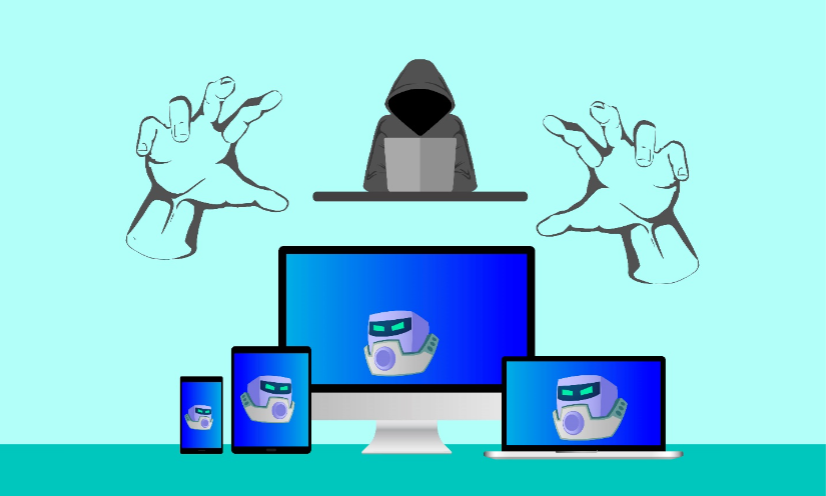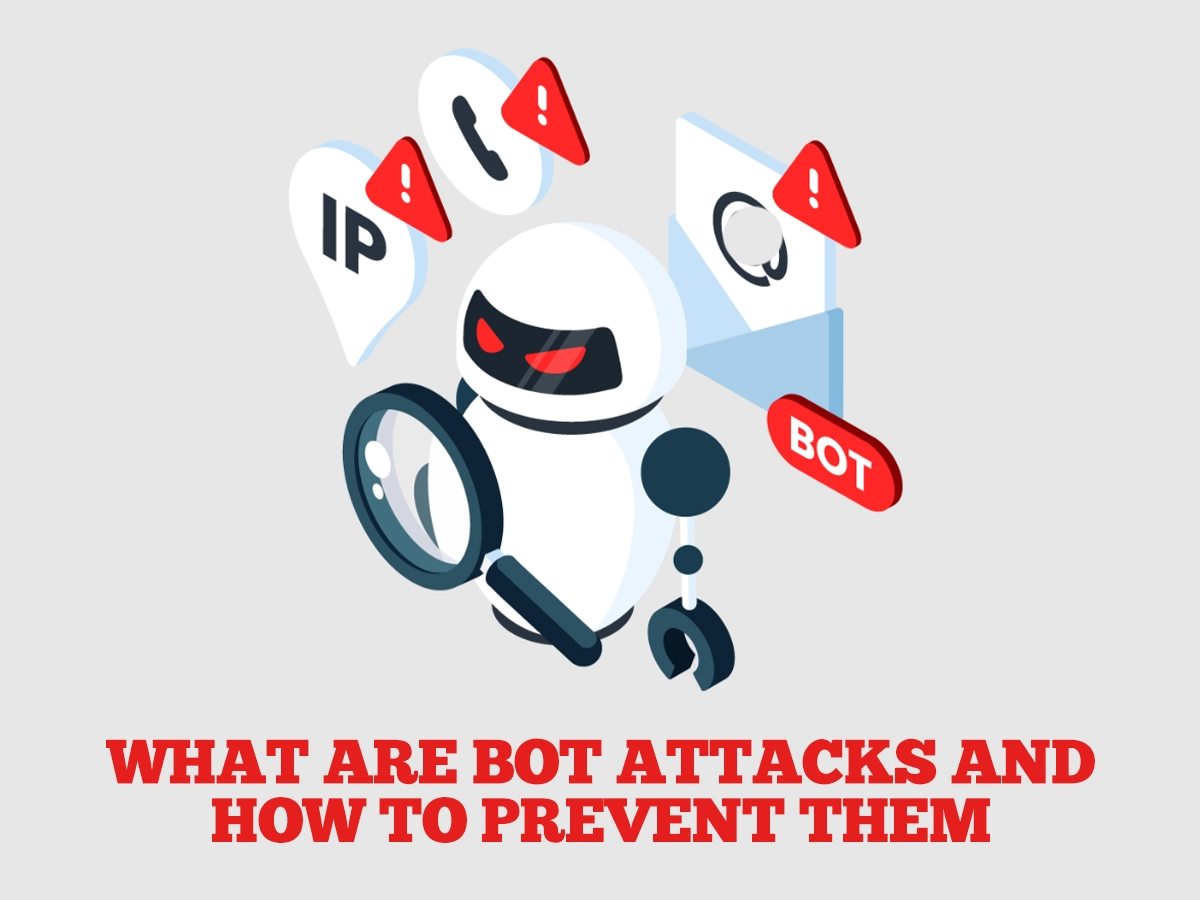Bot attacks are increasingly
targeting small to midsized organizations
Are businesses winning the war against bot attacks?
Over the past few years, the cyber risks associated with cybercrimes and hackers have been increasing dramatically.
New threats and attacks are happening daily.
Many of these cybersecurity threats and attacks happen with the help of “bots.” This includes denial of service, spam, fraud, brute force attacks, content scraping, and injecting malware into the equation. These are just a few examples of bot attacks that might cause your organization permanent or long-term damage … especially to your reputation.
Of course, one of the biggest concerns is ransomware and the financial hardship bots can cause. Due to breaches, many small to mid-sized organizations will be out of business in 18 months.
Some of the most advanced malicious bots are good at imitating human behaviors and technology, making it difficult to detect them. For example, they can mimic mouse movements, workflows, and other human behavior across your web applications.
Bots can attack unique IP addresses from hundreds if not thousands.
So, while it may seem obvious to protect yourself online by preventing the many cyber threats, doing so is not easy.
This article will give you a better idea of how bots work. In addition, we’ll be sure to provide you with straightforward ways to protect your company from these attacks as a small to midsized organization.
This guide will look at how to stop bot attacks on your website and prevent future attacks. And we’ll give a few more topics on cyber security that you may be interested in.
But first, let’s establish precisely what a bot attack means.
Deciphering Bot Attacks: What is a Bot?
A bot is a software application that is programmed to do specific tasks. Bots are automated, which means they run according to their instructions without needing a human user to start them up manually every time.
Bots often mimic a human user’s behavior on a device to replace the need for a human. Usually, they are coded to carry out repetitive tasks, as they can perform them much faster than humans.
Good Bots vs. Bad Bots
Hackers also use bots as malware that can gain control over your systems and inflict serious harm. While “good bots” make life easier for professionals, these “bad bots” can mimic cyber-attacks from within a system by bypassing the system’s defenses.
Good Bots

As the name advocates, good bots are internet bots that cause no harm and usually provide benefits and value to their owners or users. For example, good bots are great for customer support, even on a 44/7 basis. Dependent on their level of training, they can answer customers’ questions any time of day and very quickly.
Good bots alleviate workloads from human customer support employees or other departments that use them.
Bad Bots
Bad bots are also internet bots, but they are made maliciously meant to harm your systems.
It can create fake social media accounts like LinkedIn or Facebook, spam or attack businesses with inappropriate comments, and even spread fake news.
They could also be made to target individual people by spamming comments directly at them or sending out hurtful messages containing phishing, vishing, or smishing messages.
Types of Bots

Based on intent, as we explained, bots can be categorized into “Good” or “Bad” bots.
However, regarding how they function, we see that these bots are highly sophisticated in their attack mode and can inflict catastrophic damage.
Chatbots
The purpose of this bot is to mimic a human to act as an automated interface between a system and a human. A human user can communicate with a chatbot and reveal sensitive information while chatting. Such chatbots are designed with pre-recorded answers to questions most likely to be asked by the users.
The latest versions of chatbots take things a step further by working through an Artificial Intelligence (AI) and Machine Learning algorithm that interprets user queries and learns from them for future interactions. Examples of such chatbots include Siri, Alexa, and Google Assistant. But, unfortunately, Chatbots can also be used for malicious purposes.
These bots often fabricate interaction with a victim on social media platforms or dating websites to lure the victim into giving sensitive information like credit card info.
Spiders or Crawlers
This kind of bot is found in huge directories like search engines. However, as the input data and pages on search engines like Google is exceptionally high, it is nearly impossible for any set of human resources to take them into account and index them on the search engine.
Thus, developers developed the concept of spiders and crawlers to circumvent this issue. What they do is that they arrive on a website and follow the sitemap of the website and links on the website to go to different pages and index them automatically.
Web Scraping Bots
These crawlers are designed to be data harvesters. They are similar to crawlers and spiders in function but also extract information from a specific webpage. Web scraping bots help retrieve small-scale data from multiple websites. These are often used to extract data from online directories like Sports websites, Job boards, and Real estate websites.
These malicious bots can also be used for malicious purposes, as hackers can use these bots to extract data from an unsuspecting victim’s remote device.
Spambots
To increase traffic to some websites, they can publish promotional information in forums or comment areas. These bots have an inherent list of contact information they can acquire by harvesting someone’s contact directory. Then they send promotional content and ads to those emails. They can also mimic traffic on some websites, thereby fabricating fake traffic.
Monitoring Bots
The ethical version of these bots monitors a system’s health and sends out automated alerts in case something goes wrong. The unethical version, however, is often used as spyware to monitor a user’s activity across platforms and even record their keystroke activity.
What is Malicious Bot Activity & How to Prevent Bot Attacks?

The above information shows that any bot can be used for malicious intent. For example, a server’s resources are overloaded via distributed denial-of-service (DoS) bots, which stall the service entirely.
In a cyberattack known as “credential stuffing,” login information from one site that has had a data breach is used to try to access another unrelated service using multiple bots. Thus, the best way to stay safe is to be aware and implement changes in your security protocols.
Use Captcha on Your Website
Many tools and scripts have user-agent string lists in their outdated default setups. This procedure won’t stop the more experienced attackers, although some offenders may be caught and deterred. Since most current browsers compel users to accept automatic upgrades, browsing the web using an outdated version becomes more challenging.
Therefore, outdated and older websites must consider blocking their web pages with a captcha. This will prevent bots from gaining access to your site.
Block Proxy Services and Hosting Providers
Many cyber criminals use readily available hosting and proxy services, even though most expert attackers nowadays switch to other, harder-to-block networks. You can deter attackers from targeting your website, API, and mobile apps by preventing access from these sources.
Bottleneck Every Vulnerability
Protect exposed APIs and mobile apps, and if possible, share blocking information amongst systems. Protecting your website is useless if backdoors are still accessible. These are vulnerabilities that bots can exploit to gain backdoor access, thereby causing great harm to your systems.
Monitor the Cleanliness of Your Traffic
Bots’ traffic is unnatural and can harm your website sales significantly. Key insights can show you whether the traffic results from bots are variables like bounce rate and retention time. A higher bounce rate and less retention time mean that bots drive your traffic.
You will also notice your conversion rate consistently dropping over long periods. You can also note and record the number of failed login attempts on your website, as those will also result from bots.
Next Steps to Tackle Bot Attacks
At Imagine IT, we are one of the only Managed Service Providers in the Midwest that includes a fully managed cyber security solution.
If you are new to cyber security and want to learn more about it, help protect your organization. Check out our Cyber Security Page
If you’d like to learn about our specific solution created specifically for small to mid-sized organizations, please feel free to let me know. Check out this link: The Security Shield.
If you have more urgent needs or need a free security assessment, reach out, and we’ll see if we can help. Start A Cyber Security Conversation





